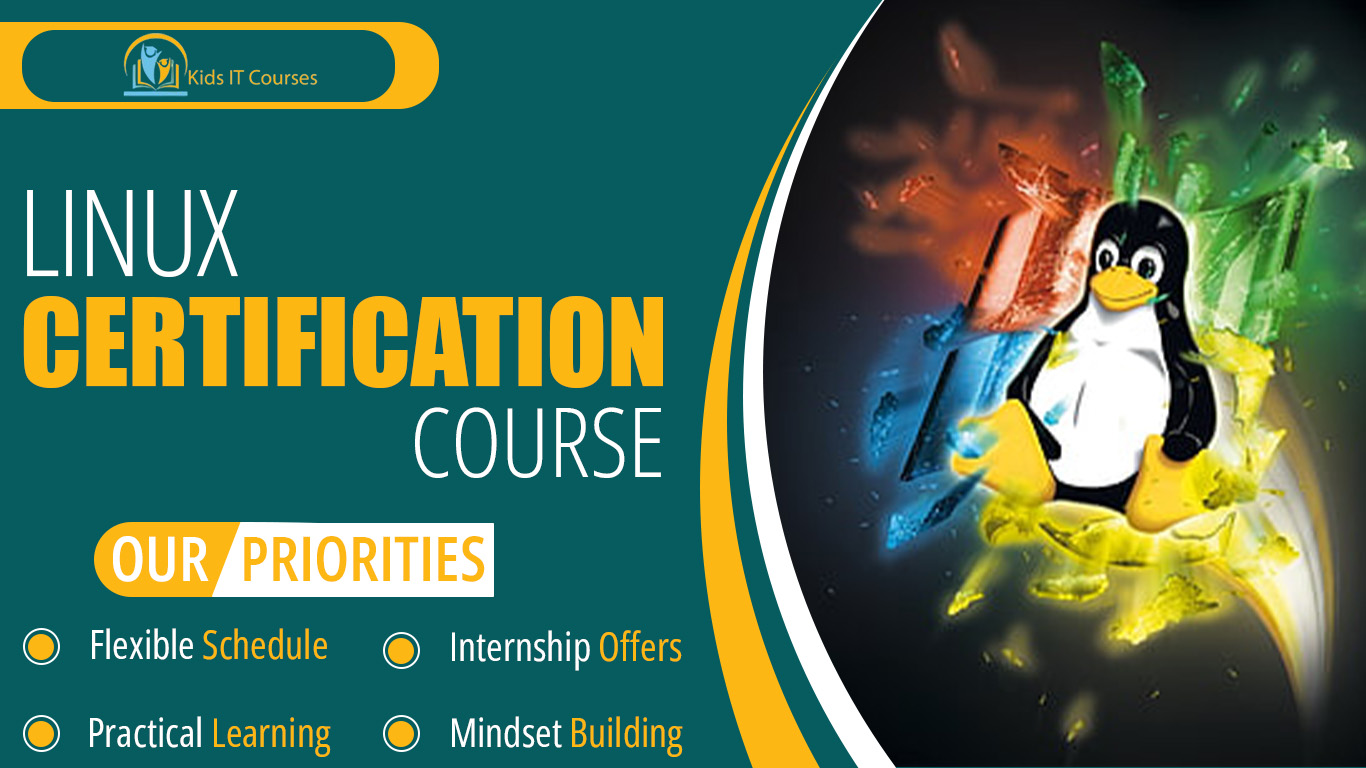
Linux Course for Kids
Definition
• Linux is a computer system. Kids learn how it works.
• It is free to use. Anyone can try it.
• Kids learn simple commands. They tell the computer what to do.
• It teaches file management. How to save and open files.
• Kids explore fun projects. Like games and coding.
• It helps problem solving. Fix small computer issues.
•Builds tech confidence. Prepares for future learning.
Importance
• Linux teaches computer basics. Kids learn how systems work.
• It is free to use. No money is needed for software.
• Kids learn commands. They type simple words to control computers.
• It works on many devices. From laptops to Raspberry Pi.
• Linux is safe. It protects from most viruses.
• It is used worldwide. Many big companies trust Linux.
• Good for future jobs. It builds strong tech skills early.
Advantages for Freelancing
• Linux is free to use. Kids can try it anytime.
• It runs on old computers. No need for new ones.
• Kids learn tech skills early. This helps in the future.
• It is safe from viruses. Data stays protected.
• Kids can change how it looks. They can customize easily.
•It is used worldwide. Kids join a big community.
Session 1 : What is Linux and Why Use It?
Introduction to Linux and how it’s different from Windows or macOS
Real-life examples: Android, servers, supercomputers using Linux
Benefits: free, open-source, secure, and customizable
Activity: Identify devices around you that run Linux
Session 2 : Exploring Linux Distributions
What are distros? (Ubuntu, Fedora, Debian, etc.)
Real-life example: Choosing the right Linux version for your need
Introduction to desktop vs. server versions
Activity: Download and boot a Linux live session
Session 3 : Linux File System & Terminal Basics
Understanding root, directories, and navigation
Introduction to the terminal/command line
Real-life example: Using commands to manage files instead of GUI
Activity: Navigate directories and create files using the terminal
Session 4 : User Management and Permissions
Creating, deleting, and managing users
File permissions and ownership (rwx explained simply)
Real-life example: Controlling access in a shared computer
Activity: Change file permissions and user roles
Session 5 : Linux Commands and Shell Scripting
Basic and advanced commands: ls, cd, grep, cat, etc.
What is a shell script and why it’s powerful
Real-life example: Automating daily tasks like backups
Activity: Write a simple shell script to automate a task
Session 6 : Package Management and Software Installation
Understanding apt, yum, snap, and tar.gz packages
Installing and removing software from the terminal
Real-life example: Keeping software updated on your system
Activity: Install a new program using command line
Session 7 : Linux for Servers and Networking
Using Linux as a web or database server
Network commands: ifconfig, netstat, ping
Real-life example: Hosting a website on a Linux server
Activity: Configure a basic server environment
Session 8 : Careers & Certifications in Linux
Linux in system administration, DevOps, cloud computing
Overview of certifications: CompTIA Linux+, RHCSA, LPIC
Real-life example: A day in the life of a Linux administrator
Activity: Plan your path to become a Linux pro
Bonus Materials
Linux command reference guide
Shell scripting templates
VirtualBox + Ubuntu setup guide
Practice tasks and mini-projects
Certificate of Completion for Linux Fundamentals
